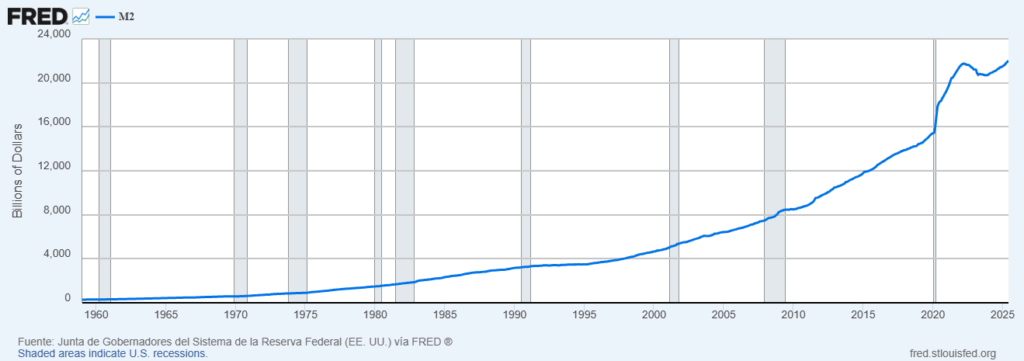Inflation devalues and erodes the value of fíat money constantly.
The objective should be that the purchasing power of your portfolio rises, not just the numbers.
In a world where dollars multiply incessantly, having a million dollars in Bitcoin (BTC) can shine on your phone’s screen, but its true value depends on what you can buy with it.
Adam Livingston, author of The Bitcoin Age and the Great Harvest, Challenge investors to look beyond bright numbers and focus on real purchasing power.
Inflation, like a silent thief, erodes the value of Fíat money, and only those who exceed this monetary tide will be able to claim real profits.
“Your earnings with Bitcoin are false if you don’t overcome the money printer,” says Livingston. Bitcoin’s price can be shot, but the crucial is the real performance, not the nominal.
“Nominal yields are what you presume, real yields are what you can really eat,” he explains. The real performance is calculated by adjusting the nominal growth of your assets to inflation, showing how many additional goods and services you can acquire.
For example, Fisher’s intuition – which adjusts nominal yields for inflation to reflect the real value— It reveals that an increase of 15% in Bitcoin, with a monetary expansion of 7%, leaves a real yield of only 7-8%.
The monetary supply tide
The US money supply, measured by m2, grew from 4.7 billion dollars in 2000 to more than 22 billion so far from 2025, an annual compound growth rate (CAGR) of 6-7%.


When the M2 increases, it means that there is more money circulating in the economy, as a reflection of an expansive monetary policy that reduces the value of money, as cryptootics explains.
In this context, Bitcoin, with its fixed supply of 21 million units, is seen as an alternative to protect against inflation and the loss of purchasing power of national currencies.
However, if the CAGR of your assets does not exceed this dilution, the profits are illusory. In this sense, Livingston proposes: CAGR Real of BTC ≈ CAGR of BTC minus the monetary expansion rate.
A bitcoin that rises from $ 100,000 to $ 200,000 by 2028 (CAGR of 14.9%) with an M2 growing at 6-8%generates a real yield of 7-9%. “Great, but not the fantasy that seems,” he says.
Measuring true progress
For Livingston, investors must set adult goals: overcome monetary expansion by a wide margin and then the personal tax impact. “Nominal impressions are marketing, real yields are survival,” he emphasizes.
This implies measuring progress in terms of real purchasing power: energy, hours of qualified work, cultivated area or high quality calories, not just dollars.
A bitcoin at 1 million dollars in 10 years sounds epic, but with accumulated inflation of 6-8% per year, That million would be equivalent to 463,000-558,000 dollars today.
Why does Bitcoin Holders matter
For those who plan to keep bitcoin up to 200,000 or more, Livingston raises a warning: “Bitcoin’s goal is to escape the fiat money spiral.”
A high nominal price is not enough if your control over scarce goods or valuable time does not increase. “If your account unit loses 6-8% per year, an objective price is only half of the equation,” he explains.
The crucial question is: did you earn more real life units? “If not, the zeros are just confetti,” he says.


